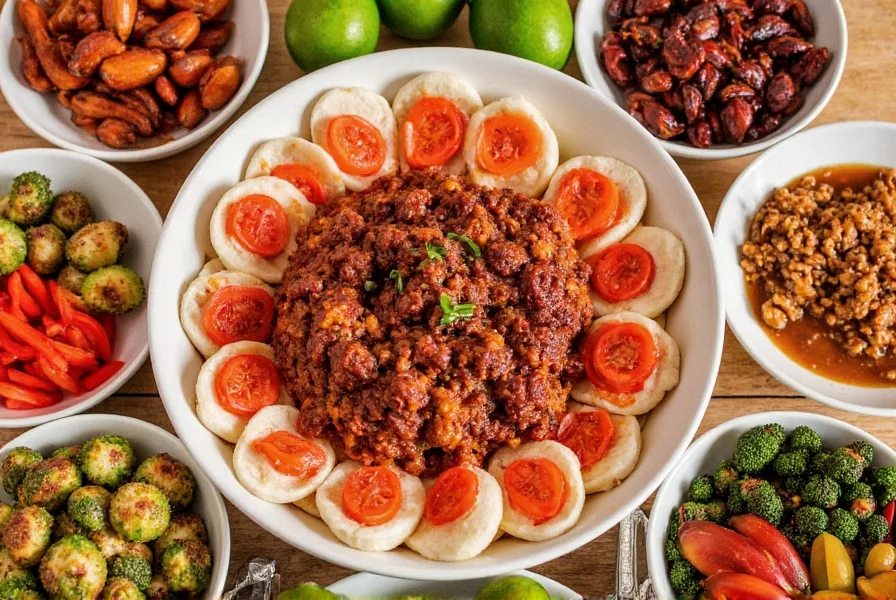Meatball Tapas Dish: A Global Spice Journey with a Twist of Flavor
Table of Contents
Introduction to the Meatball Tapas Dish
The meatball tapas dish is a unique fusion that blends the rich, savory tradition of meatballs with the small, flavorful bites of Spanish tapas. It's a dish that celebrates global spice traditions while offering an easy, interactive way to enjoy a meal. Whether you're hosting a dinner party or simply craving something different, this dish brings together flavors from around the world in one delicious bite.
This dish has gained popularity not just for its taste but also for its versatility. You can serve it as a main course, appetizer, or even as part of a larger tapas spread. The key to its success lies in the balance of spices and textures, making it a favorite among both seasoned chefs and home cooks alike.
Global Spice Traditions and the Meatball Tapas Dish
The meatball tapas dish is more than just a meal—it’s a celebration of how spices have shaped cuisines across the globe. From the smoky warmth of paprika in Spanish dishes to the bold heat of cumin in Middle Eastern recipes, each region has contributed its own unique flavor profile to this dish.
Let’s take a quick tour through some of the most iconic spice traditions that inspire the meatball tapas dish:
- Spanish Influence: Paprika, saffron, and garlic are staples in Spanish cuisine. These ingredients add depth and aroma to the meatballs, giving them a classic, comforting feel.
- Mexican Flair: Chili powder, cumin, and oregano bring a fiery kick to the dish. These spices pair beautifully with the richness of the meatballs, creating a bold and unforgettable flavor.
- Indian Inspiration: Turmeric, garam masala, and coriander offer a warm, aromatic twist. This variation is perfect for those who love complex, layered flavors.
- North African Touch: Ras el hanout and harissa add a smoky, spicy dimension. These ingredients give the meatballs a distinct, exotic edge.
By incorporating these global spice traditions, the meatball tapas dish becomes a culinary passport, allowing you to experience the world one bite at a time.
Practical Tips for Making the Perfect Meatball Tapas Dish
If you're new to cooking the meatball tapas dish, here are some practical tips to help you get started:
- Choose the Right Meats: Ground beef, pork, or a mix of both work well. For a lighter version, try using ground chicken or turkey.
- Balance Your Spices: Don’t overdo it—start with a small amount of spice and adjust to your taste. Remember, you can always add more, but you can’t take it away once it’s in.
- Use Fresh Herbs: Fresh parsley, cilantro, or dill can elevate the dish and add a burst of freshness.
- Make Ahead Options: You can prepare the meatballs in advance and freeze them for later use. Simply thaw and reheat before serving.
- Pair with Sides: Serve the meatballs on small skewers or in little bowls with sides like crusty bread, olives, or pickled vegetables.
These tips will ensure that your meatball tapas dish turns out flavorful, impressive, and perfectly balanced. Whether you're cooking for yourself or guests, these steps will make the process enjoyable and stress-free.
Buying Guide: Essential Ingredients and Tools
To make the best meatball tapas dish, you’ll need a few essential ingredients and tools. Here’s a detailed guide to help you choose the right products:
Essential Ingredients
| Ingredient | Description | Best Use Case |
|---|---|---|
| Ground Beef | High-quality ground beef with a good fat content adds juiciness and flavor. | Perfect for traditional meatball tapas dishes. |
| Paprika | Smoked or sweet paprika enhances the color and flavor of the dish. | Great for adding a Spanish flair. |
| Saffron Threads | Provides a golden hue and subtle floral aroma. | Ideal for authentic Spanish-inspired versions. |
| Chili Powder | Adds heat and complexity to the dish. | Perfect for Mexican-inspired variations. |
| Cumin | Brings a warm, earthy flavor. | Works well in Middle Eastern or North African styles. |
Recommended Tools
- Meatball Maker: A handy tool that helps shape uniform meatballs quickly and easily.
- Skewers: Wooden or metal skewers are ideal for serving the meatballs as tapas.
- Small Bowls or Plates: Choose colorful, attractive vessels to enhance the visual appeal of the dish.
- Thermometer: Ensures the meatballs are cooked to the perfect temperature without overcooking.

These ingredients and tools are suitable for both casual home cooks and professional chefs. They provide flexibility, allowing you to customize the dish based on your preferences and the occasion.
Conclusion
The meatball tapas dish is a versatile, flavorful, and globally inspired recipe that brings people together over shared meals. By exploring global spice traditions, you can create a dish that not only tastes amazing but also tells a story of culture, history, and flavor.
Whether you're experimenting with new spices, trying out different meat combinations, or simply enjoying a casual dinner with friends, the meatball tapas dish offers endless possibilities. With the right ingredients, tools, and techniques, you can turn this simple yet sophisticated dish into a centerpiece of any gathering.
So why not take the plunge and bring the world’s spices to your kitchen today? The meatball tapas dish is waiting for you—and it’s ready to surprise your taste buds with every bite.










 浙公网安备
33010002000092号
浙公网安备
33010002000092号 浙B2-20120091-4
浙B2-20120091-4